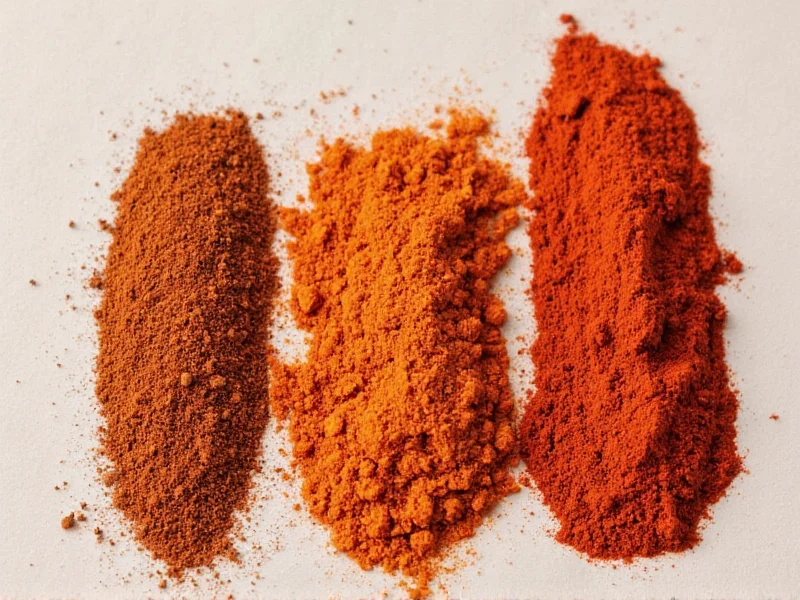Smoked paprika adds a distinctive sweet, smoky depth to dishes ranging from Spanish paella to American barbecue rubs. When you're out of this essential spice but need that signature flavor, understanding proper alternatives prevents recipe disasters. This guide provides practical, tested substitutions that maintain your dish's integrity without requiring specialty ingredients.
Understanding Smoked Paprika's Unique Profile
Before exploring substitutes, recognize what makes smoked paprika special. Made from peppers smoked over oak fires before grinding, it delivers three key elements: mild sweetness, subtle heat (depending on variety), and pronounced smokiness. The best substitutes address all three components, though some focus on replicating just the smoky element when sweetness or heat comes from other ingredients.
Top 5 Practical Substitutes for Smoked Paprika
Each alternative works best in specific culinary contexts. Consider your recipe's requirements before choosing:
1. Sweet Paprika + Liquid Smoke (Most Versatile)
This combination effectively mimics both color and flavor. Use 1 teaspoon sweet paprika plus 1-2 drops of liquid smoke per teaspoon of smoked paprika required. Best for: marinades, rubs, and tomato-based sauces where precise smokiness control matters. Avoid overusing liquid smoke, which can turn bitter.
2. Chipotle Powder (For Heat-Forward Dishes)
With natural smokiness from smoked jalapeños, chipotle powder provides comparable depth with added heat. Substitute 1/2 teaspoon chipotle powder for every 1 teaspoon smoked paprika. Best for: chili, stews, and southwestern recipes where extra heat complements other ingredients. Reduce other spicy elements accordingly.
3. Pimentón de la Vera (Authentic Alternative)
Often labeled simply as Spanish paprika, pimentón de la Vera is actually smoked paprika—just regionally named. If your recipe specifies Hungarian smoked paprika, Spanish pimentón works identically. Best for: traditional Spanish dishes like patatas bravas or chorizo recipes where regional authenticity matters.
4. Cayenne Pepper + Smoked Element
When smokiness matters more than color, combine 1/4 teaspoon cayenne with 1/8 teaspoon smoked salt or 1 drop liquid smoke per teaspoon of smoked paprika. Best for: hot sauces, Bloody Mary mixes, or any application where red color would be undesirable.
5. Smoked Salt (Colorless Smokiness)
For dishes where color alteration would be problematic (like white sauces or fish dishes), smoked salt provides pure smokiness without pigment. Use 1/4 teaspoon smoked salt to replace 1 teaspoon smoked paprika. Best for: seafood dishes, creamy sauces, or finishing touches where visual presentation matters.
Smoked Paprika Substitution Guide
| Substitute | Ratio | Best Dish Applications | Flavor Notes |
|---|---|---|---|
| Sweet paprika + liquid smoke | 1 tsp + 1-2 drops | Marinades, rubs, tomato sauces | Closest overall match; adjust smoke level carefully |
| Chipotle powder | 1/2 tsp | Chili, stews, southwestern dishes | Extra heat; reduce other spices accordingly |
| Pimentón de la Vera | 1:1 | Spanish recipes, chorizo, patatas bravas | Authentic alternative; check label for smoking method |
| Cayenne + smoked element | 1/4 tsp + 1/8 tsp | Hot sauces, Bloody Marys, spice blends | Heat-focused; minimal color impact |
| Smoked salt | 1/4 tsp | Seafood, white sauces, finishing touches | Pure smoke flavor; no color change |
Dish-Specific Substitution Recommendations
Not all substitutes work equally well across recipes. Match your alternative to your dish's requirements:
- Paella and rice dishes: Pimentón de la Vera provides authentic flavor, but sweet paprika with liquid smoke works when unavailable. Avoid chipotle powder as its heat overwhelms delicate rice dishes.
- BBQ rubs: Chipotle powder excels here, enhancing the smoky profile while adding complementary heat that balances sweet rub components.
- Deviled eggs and dips: Smoked salt preserves the pale color while adding subtle smokiness—critical for visual appeal in light-colored dishes.
- Chili and stews: Chipotle powder boosts both smokiness and heat, but reduce other spicy elements by 25% to maintain flavor balance.
- Tomato-based sauces: Sweet paprika with liquid smoke integrates seamlessly, as the red color matches naturally and smoke enhances tomato's umami notes.
Common Substitution Mistakes to Avoid
Many home cooks make these errors when replacing smoked paprika:
- Using regular paprika alone: While it matches color, it lacks smokiness, creating a flat flavor profile. Always add a smoked element.
- Overusing liquid smoke: More than 2 drops per teaspoon of paprika creates an artificial, bitter taste. Start with less—you can always add more.
- Ignoring regional differences: Hungarian smoked paprika tends milder than Spanish varieties. Adjust quantities when substituting between regional types.
- Not adjusting other spices: When using hotter alternatives like chipotle, reduce other heat elements to maintain recipe balance.
Creating Your Own Smoked Paprika Substitute Blend
For frequent cooking needs, prepare a versatile homemade blend:
Mix 2 tablespoons sweet paprika, 1/4 teaspoon garlic powder, 1/8 teaspoon cumin, and 10 drops liquid smoke. Store in an airtight container for up to 3 months. This blend works across most applications where smoked paprika appears, providing balanced flavor without requiring multiple specialty ingredients. The garlic and cumin enhance the smokiness while creating complexity that mimics artisanal smoked paprika varieties.











 浙公网安备
33010002000092号
浙公网安备
33010002000092号 浙B2-20120091-4
浙B2-20120091-4